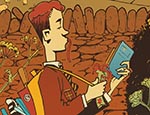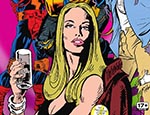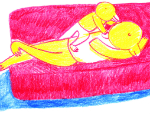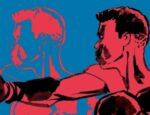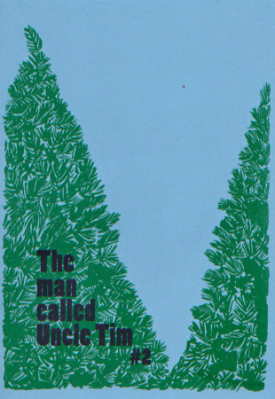 Last year in this column I reviewed the first issue of Lindsay Draws’ zine The Man Called Uncle Tim; a self-published offering that is not so much a comic as a graphic narrative, but one that nevertheless adopts some of the familiar conventions of the form. A planned multi-part project, The Man Called Uncle Tim has a twofold purpose. Told through the oral accounts of her relatives it focuses on the life of the uncle she never knew who lived in a queer polyamorous intentional community in rural Ohio until his death in 1995. It also touches on the history of Quakerism – beliefs that play a defining role in her family’s life.
Last year in this column I reviewed the first issue of Lindsay Draws’ zine The Man Called Uncle Tim; a self-published offering that is not so much a comic as a graphic narrative, but one that nevertheless adopts some of the familiar conventions of the form. A planned multi-part project, The Man Called Uncle Tim has a twofold purpose. Told through the oral accounts of her relatives it focuses on the life of the uncle she never knew who lived in a queer polyamorous intentional community in rural Ohio until his death in 1995. It also touches on the history of Quakerism – beliefs that play a defining role in her family’s life.
The first issue was recounted in the words of Lindsay’s grandmother – Tim’s mother – whereas this second instalment comes from the perspective of her father, her uncle’s brother. It’s a frank and open account of their childhood and relationship that has a commendable honesty to it. If the first issue was a poignant tale of a mother’s unconditional love for her son tinged with disappointment that his social activism led to him secluding himself from his family, then this second part begins with a more traditional account of the complexities of sibling interaction.
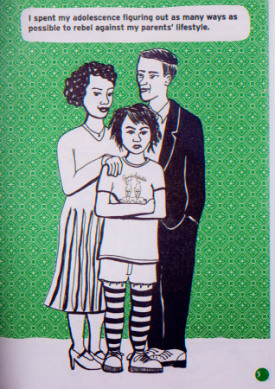 Initially, it’s a look at two young brothers growing up in rural isolation and the perilous ways they entertained themselves. If you’re a fan of EdieOP’s self-published Dangerfun then in these early pages we have a literal version of that, as Lindsay’s father recalls the negative influence he had on his younger brother. An early experience with a homophobic teacher then leads into Tim’s later years, his distancing of himself from the rest of the family, and another fascinating diversion into the evolution of the Quaker movement.
Initially, it’s a look at two young brothers growing up in rural isolation and the perilous ways they entertained themselves. If you’re a fan of EdieOP’s self-published Dangerfun then in these early pages we have a literal version of that, as Lindsay’s father recalls the negative influence he had on his younger brother. An early experience with a homophobic teacher then leads into Tim’s later years, his distancing of himself from the rest of the family, and another fascinating diversion into the evolution of the Quaker movement.
There’s an obvious overlap with the first issue but then this is what The Man Called Uncle Tim is all about. Personal history from a number of viewpoints; the same events through different eyes. That prose/comics synthesis that Lindsay Draws adopts provides a true layered connection with the book; a studied profundity from the text goes hand-in-hand with an emotional immediacy from the visual characterisation.
As with the first issue there’s a sense of regret and helplessness at the unintentionally fractured relationship between Tim and the rest of his clan that brings the reader fully into this intensely personal yet thoroughly relatable family saga. Those wanting to discover more about this book can do so at tomorrow’s DIY Cultures fair in London where Lindsay will be exhibiting…
For more on the work of Lindsay Draws visit her site here. You can buy copies of The Man Called Uncle Tim online here.
For regular updates on all things small press follow Andy Oliver on Twitter here.





